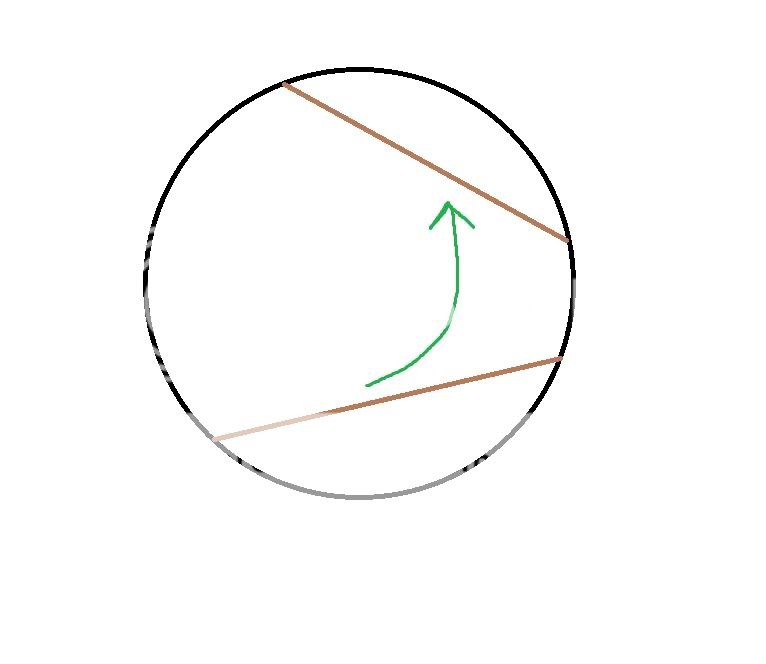Here's my attempt:
The midpoint will make a smaller circle concentric with the original circle in the diagram. To find the radius of this circle, we use pythagoras.
Let's join the centre of the circle to the midpoint of the line and join the centre of the circle to the end of the line to form a right angled triangle. The hypotenuse is R (the radius of the original circle) and the base is half the length of the line, which is

. Hence the radius of the smaller circle is:
^ 2)
The area of the smaller circle is thus:
)

